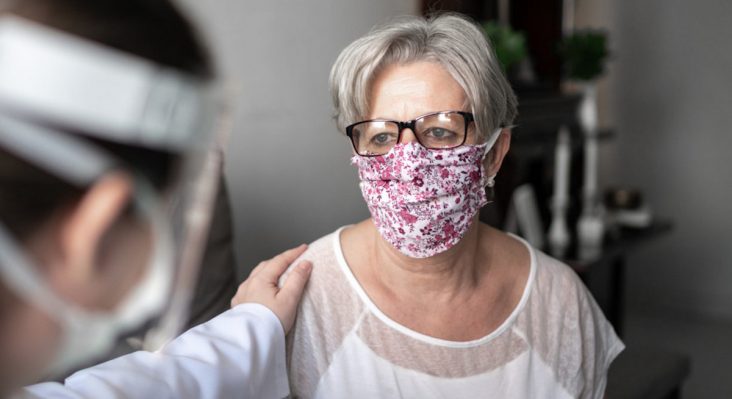Updated UAMS modeling estimates COVID-19 cases above 150,000 in late October
by July 7, 2020 3:42 pm 3,307 views

The number of COVID-19 cases in Arkansas could reach 150,000 in late October, with hospitalizations ranging between 2,794 and 4,650, according to updated modeling published Tuesday (July 7) by the University of Arkansas for Medical Sciences.
New numbers, updated from modeling posted June 19 by the Fay W. Boozman College of Public Health at UAMS, are based on the recent rise in known Arkansas COVID cases. The unexpected rise resulted in the need for an update because the previous model had estimates below the reality.
“In the report prepared for June 19th, we were confident in forecasting the number of covid cases in Arkansas would reach 16,000 by then end of the month. In reality, the number of covid cases on June 30th was over 20,000, doubling the number of covid cases in just over three weeks,” noted the UAMS report. “The number of new covid cases in Arkansas changed so drastically after June 19th, the short-term models were no longer providing an accurate forecast.”
Estimates in the updated modeling include the following assumptions.
• Patients who test positive for COVID-19 will be most likely to initially be hospitalized at the nearest hospital. Facility-level probability of treating a given positive patient is impacted through the weights that account for the number of available beds in a given county and in the facility.
• 12% of individuals testing positive for COVID-19 will require hospitalization.
• 4.5% of those testing positive for COVID-19 will require ventilation.
The new modeling projects 35,000 known cumulative COVID cases by July 10, or 30,000 by July 12 using more conservative estimates. Deaths are estimated to reach 375 by July 12. The modeling also shows 20,000 new daily cases by the end of September. However, “complete compliance” with wearing masks in public could reduce that to 6,000. “Modest increases in mitigation” could push the number to 12,000 new cases a day, the report advised.
“A similar pattern emerges with respect to daily deaths,” the report noted.
Known COVID-19 cases in Arkansas totaled 24,512 on Tuesday, up from 24,253 on Monday. The number of deaths rose from 292 to 301. The number of COVID patients hospitalized in Arkansas was 369 on Tuesday, up from 337 Monday.
UAMS Chancellor Dr. Cam Patterson said residents have the power to push the estimates lower.
“The good news is that Arkansans have the ability to change these forecasts. Simply wearing a mask will dramatically bend the curve. … We all need to wear our masks. It’s a very simple thing, with dramatic effects. Just by masking, we can save lives,” Patterson said in a video that accompanied the updated modeling.
Following are two long-term estimates from the new UAMS modeling.
• Mean-case estimates
Oct. 29
Cumulative cases: 111,776
Hospitalizations: 2,794
ICU beds: 838
Ventilators: 586
• Worst-case estimates
Oct. 24
Cumulative cases: 186,026
Hospitalizations: 4,650
ICU beds: 1,395
Ventilators: 976
The report also included changes in past assumptions.
“The increase in actual and predicted cases is due to the relaxing of social distancing regulations. Previously, we thought the number of increased cases was associated with increased testing. Following the loosening of social distancing measures, we see a large increase in confirmed cases that deviates significantly from trend. The predicted number of cases are rising and expected to be above 27,000 by July 13.”
Modeling from the Institute for Health Metrics and Evaluation (IHME) at the University of Washington shows COVID deaths in Arkansas reaching 724 by Nov. 1, or 462 with broad compliance in using masks. The modeling estimated 311 deaths on Tuesday, just higher than the 301 actual deaths.
Gov. Asa Hutchinson provided this statement about the new UAMS modeling: “The latest modeling reflects the flattening of our curve in Arkansas. It lowers the prediction of the number of Covid cases at the peak by over 20% and stretches the peak time to late October. The modeling is one tool that is useful to consider but it is constantly changing based upon new data and the progress we make in our fight against the virus. I expect it to change a number of times in the coming months based upon our hopeful success in reducing the daily increase in cases.”
